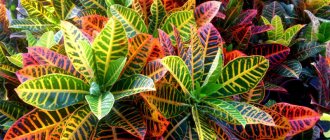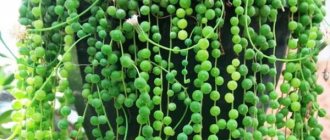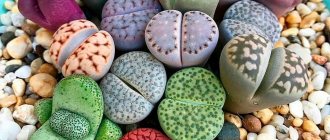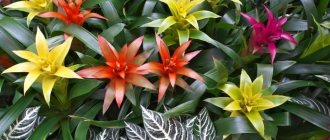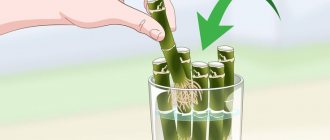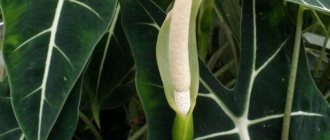Philodendron is an evergreen plant native to tropical regions of the world. This vine can be meet in the jungles of Latin America and Australia.
The name has ancient Greek roots and literally translates as “tree-loving,” which indicates the peculiarity of the existence of philodendron in the wild: for normal growth and constant access to sunlight, it uses tree trunks as support.
There are many types of this vine, some of them are cultivated in botanical gardens and greenhouses, but philodendron is also popular as a houseplant due to its decorative appearance. This is an unpretentious flower that even a novice gardener can grow.
Types and varieties of philodendron with photos
There are so many varieties of this plant that not all of them have been studied even now. Known species and varieties number about four hundred. They differ significantly from each other - Burle Marx philodendron, which is a branching bush, is not very similar to, for example, a spear-shaped one .
Of course, not all of them will be described below, but most of the most popular and in demand will be discussed. Types and names with photos are presented below.
Atom
This is a small philodendron with a straight stem. It reaches a maximum height of thirty centimeters, making it very compact. Only Goldie Locke is smaller in size.
Its leaves are bright green with a glossy sheen , they have wavy edges and consist of five lobes. All these features make it an ideal house plant.
Scaly
Philodendron scaly is also small in size. It got its name from the reddish fleecy scales on the stems. Its leaves are often cut into five lobes. May also have whole or trilobed ones.
Warty
This variety is distinguished by leaves whose surface is covered with stiff bristles. They are also distinguished by their dark color, large dimensions and solid , heart-shaped shape.
Elegant
Philodendron graceful is a larger variety, reaching a height of seventy centimeters. It is easily recognized by its large leaves. They have the shape of a thin and long middle leaf, from which equally thin and long elements extend.
At home, the plant does not bloom, but due to its appearance it is excellent for decorating rooms.
Cobra
Philodendron Cobra is distinguished by voluminous oblong whole leaves with a pointed tip. Growth characteristics are such that additional artificial support may be required. The plant does not like direct sunlight.
Blushing
The variety got its name from the red base of the stems holding leaves. The plant has a woody trunk and huge leaves, the size of which can reach up to thirty centimeters in length and twenty centimeters in width.
This is one of the most popular varieties of philodendron . It does not require much care and attention, and easily tolerates the lack of sunlight and lack of moisture.
Xanadu
“Adult” Xandu have large feathery leaves with lobes. They reach forty centimeters in length. The trunk of the plant can grow up to one and a half meters. Under natural conditions, this value increases to four meters.
climbing
It is characterized by solid thick leaves of a dark green color, the shape of which resembles a heart. An “adult” plant reaches two meters in height . Another characteristic feature is long and thin shoots. Most often grown in hanging vases.
Mediopicta
Mediopicta philodendron is an ivy-shaped flower whose main feature is variegated leaves with colored emerald or amber stripes in the early stages of life. An “adult” plant loses this quality.
Jellyfish
Philodendron jellyfish grows very quickly. Its distinctive feature is the bright amber color of the leaves and burgundy stems, inherited from the blushing philodendron, of which it is a subspecies.
Requires a lot of sunlight for normal growth.
Sello
Sello or Philodendron bipinnate is another large variety. Its height at home can reach three meters, and the length of triangular leaves can be almost a meter. The leaves themselves are pinnate and dissected into several narrow lobes.
Scandance
A variety of climbing philodendrons. They do not branch, but grow upward. The leaf cuttings are scarlet in color.
Guitar-shaped p panduriforme
This variety requires artificial support. It got its name because as it grows, the heart-shaped leaves stretch out and take on a guitar-like shape. The leaf splits into three lobes. The stems of the plant are flexible.
Arrowhead p sagittifolium
It has long and narrow leaves that reach more than half a meter in length. It is grown more often in greenhouses and botanical gardens, because it is too large for the home .
Guttiferum p guttiferum
The shape of the leaves resembles an ellipse with a pointed end. So called due to the drop-like white spots along the edges of the leaf .
It rarely blooms at home. It is demanding in terms of living conditions: it needs a high level of humidity and constant access to natural light.
Ivy p hederaceum
Another “climbing”, liana-shaped variety of philodendron. Its leaves grow up to half a meter in length and are bright green in color. The most popular subspecies of the variety is called Philodendron Brazil.
Lobed p laciniatum
It is a vine whose length can reach two meters. The stem is thick and highly flexible. For full growth at home, artificial support is required .
As the leaves mature, they acquire a dark hue and a leathery texture.
Golden black
It is distinguished by oblong velvety leaves with yellow veins. The underside has a reddish tint. The leaf blade grows up to eighty centimeters in length.
Description of the plant
This flower belongs to the Araceae family - an evergreen perennial plant. The Philodendron genus is large (about 900 plant species, many of which have not yet been fully studied by botanists) and incredibly diverse. It contains small bushes and real giants, differing in shape, feeding methods, and preferences for living conditions. Most often in the natural environment, Philodendrons climb up nearby trees, but there are also epiphytic and semi-epiphytic species that obtain moisture and nutrition from the environment (air, dew, sun). If Philodendron seeds sprouted away from trees and other supports, then the shoots will spread along the ground, guided by the shadow, towards the nearest support: a tree, wall or fence. Under natural conditions, the length of the Philodendron vine can reach 200 m.
Philodendrons have both underground and aerial roots. They use numerous aerial roots, small and hairy, for attachment to supports. With long and thick roots, plants absorb moisture and obtain food for themselves. Sometimes such roots make their way under the soil and act as a root system there. Very convenient, especially if the root system is damaged or dead.
Appearance
Philodendron stems are fleshy and woody at the base. There are species that have a fairly powerful stem, which allows plants to rise to great heights without support.
The leaves of the flower are large, shiny, and very often carved. One plant may have leaves of different shapes and sizes. Scale-like leaves (cataphylls) protect vegetative buds. The main leaves are alternate, petiolate. The length of one such leaf, in some species, reaches two meters, and the width is 90 cm. But other types of Philodendron have leaves that are more modest in size - only 11 cm. Leaf plates are ovoid, heart-shaped, oval, pinnately dissected or arrow-shaped.
This may be interesting: Scindapsus - a tropical vine in your home
Young leaves initially look like hearts, and as they grow, they change their shape and size. In addition, as a rule, the color of the upper leaves of a flower is a darker shade than the lower ones. The color of the leaves is mainly dark green, with the upper side being more intensely colored than the underside. There are species with purple leaves, but they are rare.
Bloom
In nature, Philodendrons are flowering plants. They produce flowers in the form of spadixes with waxy, bicolored hood-like spathes. The bedspreads are painted in shades of pink, pale green, red and purple. The flowers are bisexual. The fruits are small berries that ripen at different times, depending on the species. Unfortunately, at home, even with extremely comfortable maintenance, Philodendrons bloom extremely rarely.
Philodendron sap is toxic and you should wear gloves when handling it. At the same time, Philodendron is a useful plant that has a beneficial effect on the microclimate of the room in which it grows. It releases phytoncides that kill microbes dangerous to humans. NASA included this flower in the list of plants that purify the air.
Caring for philodendron at home
Different varieties of philodendron have different maintenance requirements; most often, caring for it at home is not difficult. However, there are general rules, the observance of which will ensure correct growth and long life of the flower.
Temperature
Home philodendron loves warmth, so for all its varieties a temperature of 20–22 °C is recommended (including for the soil). Most varieties die from low temperatures. They are not intended to grow on window sills, and in the cold season it is recommended to enclose them with heat-insulating material.
Lighting
Depending on the variety, they react differently to light, but it is recommended not to expose the plant to direct sunlight. Many species tolerate shade well, but all, without exception, grow best in moderate natural light.
Watering
During the hot season, it is recommended to avoid letting the soil in the pot dry out. Philodendron needs a moist environment. In winter, watering can be reduced, depending on the variety - up to once a week.
Air humidity
Philodendron is a tropical plant adapted to life in humid environments. Some varieties, such as Red Emerald, are extremely sensitive to dryness . Therefore, you should regularly spray and moisten the plant in other ways.
Important! In addition to a humid environment, the plant needs fresh air. Regular ventilation, subject to proper thermal conditions, will ensure correct growth.
Transfer
Young plants require regular replanting: at least once a year. For “adult” philodendrons, indications for replanting are root growth, soil deterioration, souring and salinization .
This video shows one of the methods of transplanting Philodendron.
Philodendron Fertilizer
The feeding regime should be observed as responsibly as the watering regime. The plant responds best to organic fertilizers. In the warm season, you should fertilize at least once a week, in the cold season - once every thirty days. The concentration of fertilizing should be low.
Carefully! Variegated varieties are extremely sensitive to nitrogen, so fertilizers based on it, or at least those containing it in high concentrations, should not be used.
Is it possible to keep a philodendron at home?
Superstitious and overly cautious gardeners do not recommend keeping philodendron at home.
The first category of such advisers is guided by signs. It is believed that philodendron is a “husband buster” plant that provokes quarrels and the subsequent departure of the spouse from the family. Especially in this regard, they slander the climbing philodendron, one of the most popular domestic species.
The second category of flower growers bases their beliefs on one simple fact: philodendron juice is poisonous . Therefore, if you are going to have such a tropical beauty at home, you should work with them with gloves so that the juice does not irritate the skin.
You should not believe in omens, but you must adhere to the main rule of all young parents and pet owners: keep the poisonous vine where children and four-legged pets cannot reach it. If there is no such inaccessible place where you could “hide” the philodendron, you should wait or refuse to purchase it.
But there are benefits from the poisonous vine: philodendron is on the list of plants that do the best job of purifying the air. In particular, they rid the atmosphere of formaldehyde and xylene.
Diseases and pests
Like any other plant, philodendron is susceptible to diseases.
The types and causes are described in detail below.
Diseases of bacterial origin
There are only two of them:
- Ervinia carotovora, also known as spotting. Disturbed temperature conditions or high humidity provoke bacterial damage to the leaf blade: small formations appear on it in the form of spots, which quickly grow and destroy plant elements .
- Pseudomonos cichorii. Has similar causes. But during the process of necrosis, the leaves do not soften and do not acquire a watery consistency.
Fungal
- Fungal spot is a pathogenic fungus that causes yellow, watery spots to appear on leaves. Plant tissues change color and die.
- Phytophtorica parasitica is a fungus that causes darkening of the leaf blade.
- Rotting. It is a blackening of the roots , the leaves become brown, but do not fall off after dying.
- Sceloritum rolfsii. Roots and stems are also affected; they are covered with white fluff and brown fungal seeds.
Viral
With viral diseases, growth stops, the shape of the leaves is distorted, and atypical patterns appear on their surface . The process is completed by the plant.
Philodendron pests and their control
The philodendron flower is susceptible to the negative effects of organisms such as:
- mealybug;
- spider mite;
- thrips;
- scale insects;
- false scale insects;
- nematodes;
- slugs;
- sciarids.
Most pests are destroyed by insecticides. Some species, namely their eggs, are not destroyed chemically and require mechanical action : visible manifestations of vital activity are collected with a vacuum cleaner or wet cotton wool. In some cases, it is permissible to treat the plant with foam from laundry soap.
This video explains how to deal with scale insects on Philodendron.
Philodendron diseases and difficulties encountered during cultivation
| Problem | Cause |
| Tips and edges of leaves dry out | Insufficient watering |
| Tips and edges of leaves dry out | The air is too dry |
| The leaves wrinkled and turned brown | |
| Tips and edges of leaves dry out | Too little watering |
| Leaves lose their variegated color and characteristic dissection | |
| The brown edge on the edges of the leaves expands | Overwatering |
| Leaves grow small | |
| Small and pale new leaves | Little light |
| Elongated shoots | |
| Leaves lose their variegated color and characteristic dissection | |
| Light or brown dry spots on the surface of the leaves | The sun is too bright |
| Pale leaves | |
| Leaves curl down | Excess fertilizer |
| New terminal leaves grow small and yellow | Lack of fertilizers |
| The leaves lose their variegated color and characteristic dissection. | |
| Leaves lose their variegated color and characteristic dissection | Hypothermia |
| The leaves turn black |
Pests that philodendron is susceptible to include traditional scale insects, mealybugs and spider mites. The methods of dealing with them are simple - store-bought or even folk remedies.
A serious cause for concern is the rotting of philodendron stems. This most often occurs due to the fact that the vine growing in heavy soil is over-watered at low temperatures.
But yellowing and falling of the lower leaves is a natural process of plant aging.
Another natural phenomenon is the appearance of water droplets on philodendron leaves. This happens before rain and is caused by high air humidity, when the plant can no longer evaporate moisture into the air due to its excess. In this case, you need to wait a little longer with moisturizing, perhaps even reduce watering.
Philodendron: is the plant suitable for the home?
Philodendron is one of the most popular indoor plants. The shape of leaves of different varieties and other appearance features provide high decorative potential. Many varieties, such as radiant or brilliant, are compact.
The largest species, those that have large leaves more than 50 centimeters in length (philodendron bipinnate) or those that grow high (more than a meter), are usually grown in greenhouses and botanical gardens.
However, if there are conditions at home for the growth of these plants, even they can become a beautiful decorative solution.
Philodendron blushing - why is it called that?
The vine owes its name to its color. Young leaves, stems and petioles of philodendron first have a beautiful red color. As the foliage develops and matures, it turns green, but the petioles themselves remain red.
This vine is considered to be non-branching. Most often, philodendron grows into one long shoot that bends bizarrely. However, sometimes lateral processes may appear on it.
The leaf plate of the plant is solid, linear in shape. At the petiole itself, the leaf looks like a heart, but then it stretches out, and the tip becomes elongated and pointed. The total length of the sheet is about 20 cm with a width of 15 cm.
Philodendron blushing is a separate type of crop with its own subspecies. The most popular varieties of blushing vine are:
- Burgundy. It grows slowly and needs bright, indirect light.
- Emerald. It has larger leaves up to 25 cm long.
- Jellyfish. The variety is characterized by yellow leaves, while the petioles and stems are red. Grows quickly.
Reproduction methods
There are several ways to cultivate philodendron.
Propagation by cuttings and leaves
The easiest and most affordable way is propagation by cuttings and leaves. The cutting for planting must contain at least two internodes . It is better to plant in a mixture of sand and peat or in water.
It is recommended to pre-apply root formation stimulants. It is necessary to observe the thermal regime and regularly ventilate the room.
Rooting air layering
Many species, such as Philodendron bipinnate, reproduce by aerial roots. To do this, you need to take a cutting with roots, fix it close to the mother plant above the soil (a mixture of peat and sand) so that some of the roots are in contact with the surface.
This video shows how to propagate Philodendron by layering.
Planting a woody stem
You need to make small cuts at the top of the stem, treat it with a substance that stimulates root formation and wrap it in dense material (preferably cellophane), having previously prepared a lining of moss.
Important! The moss must maintain a moist environment. This can be achieved by securing the material as tightly as possible so that air does not penetrate inside.
Growing from seeds
Growing philodendron from seeds is quite simple. Simple rules should be followed: seeds are sown close to the surface in loose soil and at a large (up to five centimeters) distance from each other.
Philodendron is a popular houseplant that comes in many varieties and varieties. It does not require much attention, grows quickly at home and has an aesthetic appearance. If you follow a few simple rules and take a responsible approach to care, the plant will delight you for a very long time.
How to propagate Philodendron yourself
Most often, gardeners propagate philodendron by cuttings - this is the easiest and most reliable way. Both apical and stem shoots are suitable - the main thing is that they have at least two leaves. The most suitable case: an area with aerial roots. The cuttings are planted in sphagnum or sand-peat mixture, covered with a transparent film and maintained at a temperature of 25 degrees above zero.
Cuttings of some varieties of philodendron take root well in water, but soil rooting is still preferable, because in this case the roots will not have to adapt when transplanted into the ground.
If rot appears on the cut, cut off the damaged area and treat the cut with crushed coal. After this, you can try to root the sprout in the soil again.
You can also root a stem cutting that has no leaves. It needs to be laid on moistened moss and the container placed in a warm place. Perhaps the cuttings will not develop roots, but a bud will awaken from which a shoot will sprout. When it reaches 5-6 cm, it is cut and rooted. And on the “stump”, after some time, a new bud can sprout.
In order to propagate philodendron by leaf, the leaf is cut off at the heel and placed in water. You can plant it in light soil, but in this case the container must be placed in a bag and ventilated regularly. You can tell that the plant has successfully taken root when a new leaf appears.
When propagating by air layering, the shoots of vines are simply fixed to the ground until roots appear at their nodes. As soon as this happens, the rooted shoot is cut off from the parent plant.
In the case of tree-like philodendrons, a ring cut is made in the spring on their woody trunks. A second one is made 3 cm lower or higher, and the bark between them is removed. The exposed cut is treated with a root former, wrapped in moistened moss and wrapped in polyethylene.
The moss needs to be constantly moistened, and then after a few months roots will appear there. A couple of months after their appearance, the film and moss are removed, the trunk underneath is cut off and planted in a container. Do not rush to throw away the remaining stump: most likely, new shoots will appear on it over time.
Seven secrets of success:
| 1. Growing temperature : summer - 18 - 27°C, winter - cool dormant period at a temperature of 17 - 20°C. |
| 2. Lighting : shading from direct sunlight; philodendron can receive direct sunlight in the morning and evening in spring and summer. In autumn and winter there is bright lighting throughout the day. |
| 3. Watering and air humidity : a well-moistened substrate during the growing season; in winter, in accordance with the air temperature in the room, the substrate is dried to half the depth or more between waterings. Air humidity increases with the onset of hot weather. |
| 4. Pruning : Formative pruning is not required for most varieties. Sanitary is needed as needed, when it is necessary to remove old, yellowed leaves. |
| 5. Soil : nutritious and loose substrate with a high organic content, with a neutral or slightly alkaline pH. |
| 6. Feeding : during the entire growing season - mineral fertilizers or organic matter every 2 weeks. In autumn, fertilizing is reduced, and in winter it is stopped completely. Resume fertilizing in the spring, when young leaves appear. |
| 7. Reproduction : stem or apical cuttings in early spring, sowing seeds. |
Botanical name : Philodendron.
Philodendron domestica - family . Aroid.
Homeland of the plant . Central America.
{loadmoduleid 2345}
Description . Philodendron is an extensive and very diverse in external characteristics genus of plants, including about 500 species of vines and subshrubs, among which there are evergreen and deciduous species.
Many plants have long aerial roots on their stems.
The shape and size of the leaf blades are extremely varied, as well as their shade. The leaf petioles are long.
During the flowering period, plants form inflorescences —cobs surrounded by thick blankets.
Height . The philodendron flower grows quickly - it can add 50 - 100 cm in height over a season .
The final height of the plant varies greatly and depends on the specific species.
{loadmoduleid 2920}
